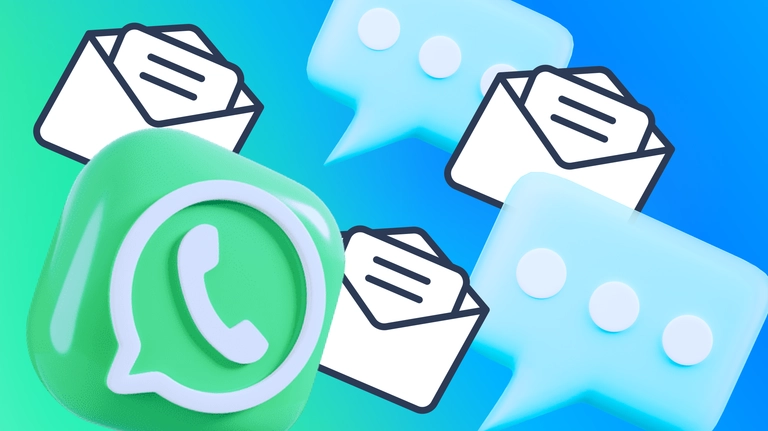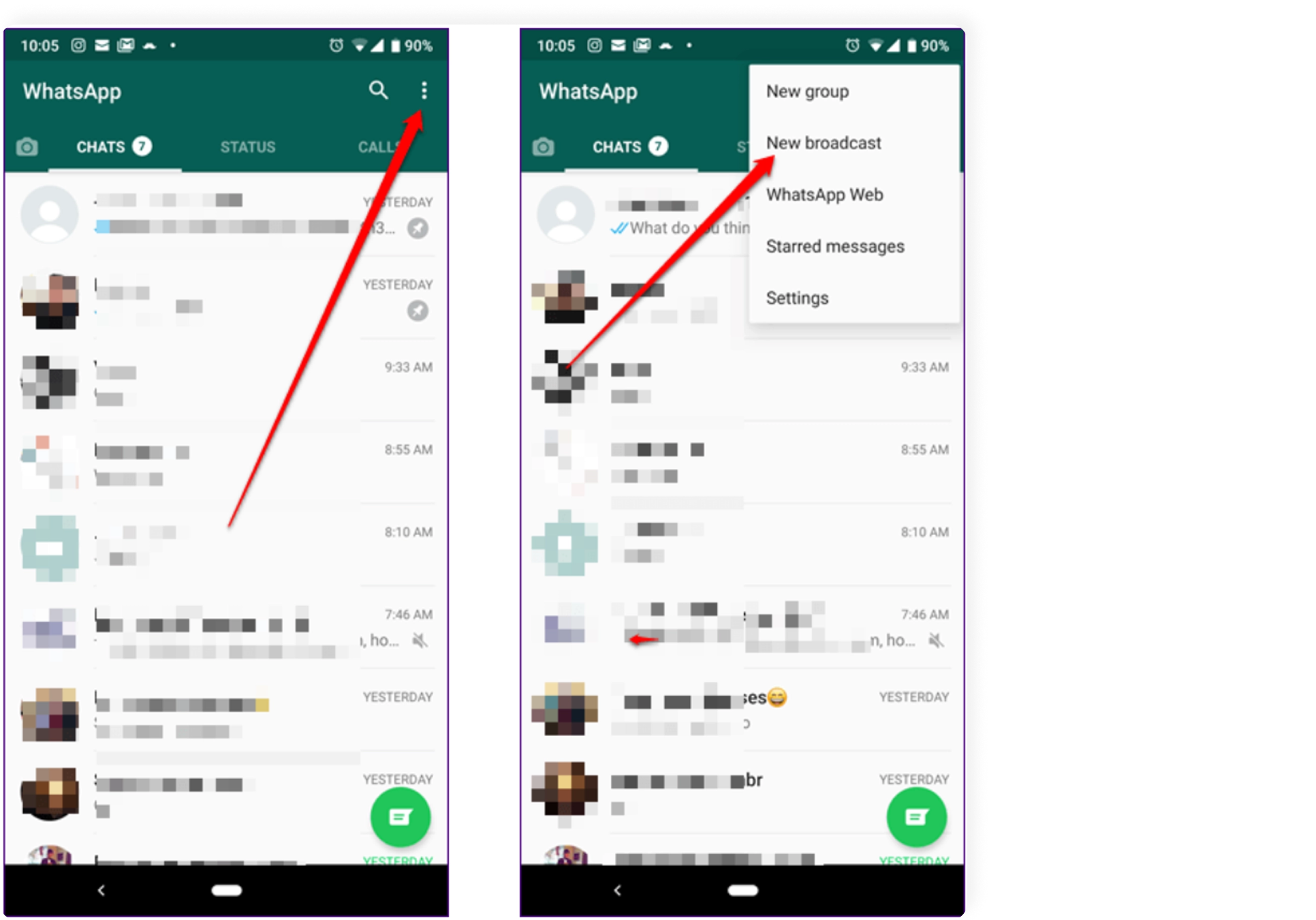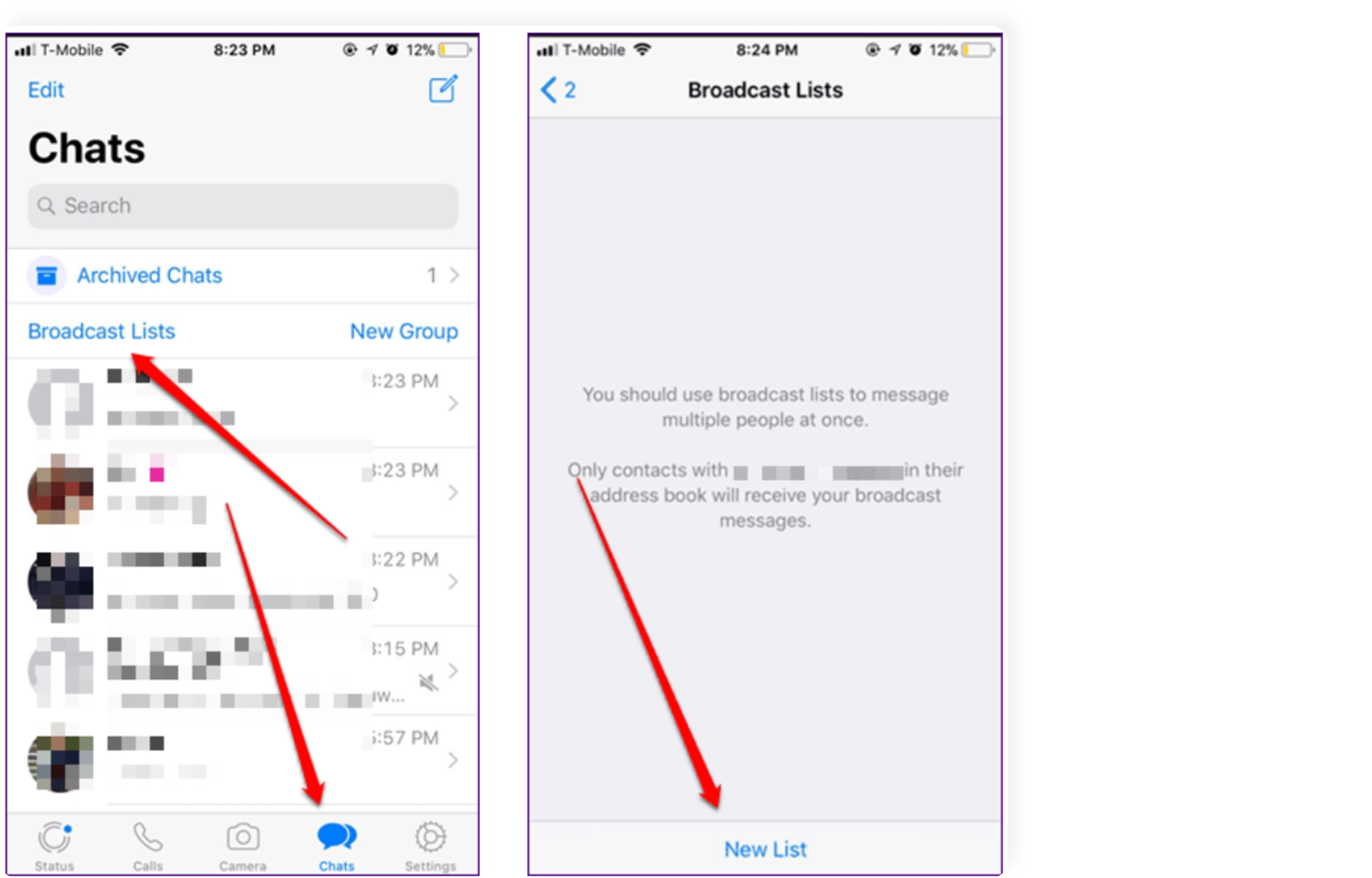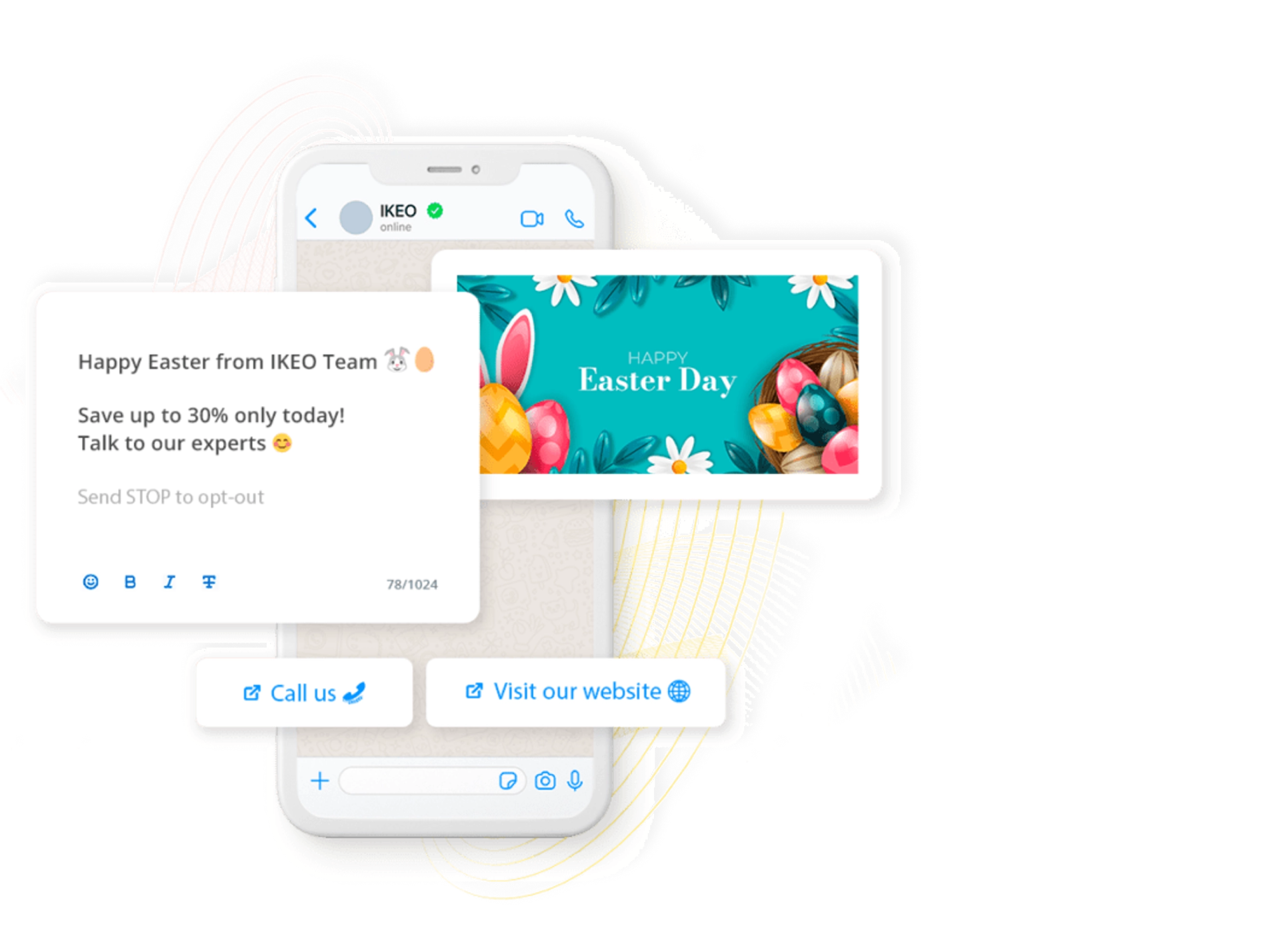
WhatsApp broadcast: a complete guide
WhatsApp broadcasts: a mix of group chats and email marketing. Learn how small and medium businesses can use them to improve communication.

If you don’t already think that WhatsApp is the best messaging tool for your business, this feature will make you think otherwise. What we’re talking about here is WhatsApp broadcasts of course, which is like a mix of group chats and email marketing. This makes it ideal for small and medium businesses to contact and keep in touch with their customers.
WhatsApp broadcasts are often compared to WhatsApp group chats, but there are quite a few differences between them. In this article, we will take a look at those differences and learn everything there is to learn about WhatsApp broadcasts: benefits, limitations, how to use it for business, how to set it up, and more. Ready? Let’s jump right in.
WhatsApp broadcast vs. group chat: which one to choose?
- Number of participants
This might seem counterintuitive, but broadcasts in fact have a lower limit than group chats in terms of how many people you can contact at once. Broadcast lists can have up to 256 people, whereas group chats can have up to 1024 participants. However, you can also have as many broadcast lists as you want.
- Message sending limitations
In a group chat, anyone that was added to the group can send messages (unless the group admin restricts this). In a broadcast, only the creator can send messages. People can reply to the creator, but only in a 1-on-1 message.
- Admin control
As mentioned above, in a group chat the admin can control who sends messages and also who’s part of the group. With broadcasts this doesn’t really apply, since they are mostly 1-way messages and occasionally 1-on-1 conversations if a recipient decides to reply. Broadcasts admin can however remove people from their lists.
- Chat history
In group chats, new members can’t see the past messages. However, in a broadcast list, since the conversations are 1-on-1 with the sender, recipients can see the chat history.
- Blocked contacts
Blocked contacts in a broadcast list will not receive any messages, whereas blocked contacts in the same group chat can still receive your messages.
- Recipient visibility
All members can see each other in a group chat, where as recipients in a broadcast list cannot.
- Participant replies
In a group chat, all participants can see the replies of others. In broadcast lists, replies are only seen by the recipients that are part of the 1-on-1 conversation.
- Exiting the list
Recipients part of a broadcast list don’t necessarily know that they’re part of it, so they cannot opt out themselves. In a group chat on the other hand, anyone can choose to exit the group at anytime.
- When to use broadcast vs. group chat
Broadcast lists are best to be used when the goal is to send a message to many people without them knowing about each other. A great example is announcing a product sale or some news about your business. A group chat is the better option when you want the recipients to not only know about each other but also talk to each other.
WhatsApp broadcast: what is it and how to use it for business?
- Purpose of broadcasting on WhatsApp
The purpose of broadcasting on WhatsApp is sending a message to multiple people simultaneously without creating a group chat. Similarly to newsletters, this is particularly useful for businesses looking to send out marketing messages or announcements.
- Creating and editing a broadcast list
Follow these steps to create a broadcast list:
Android
Tap on the three-dot menu button > New broadcast.
Search for or select the contacts you want to add.
Tap the checkmark icon.

iPhone
Tap Chats > Broadcast Lists > New List.
Search for or select the contacts you want to add.
Tap Create.

If you’d like to edit your broadcast lists, follow these steps:
Android
Open your broadcast list.
Tap More options > Broadcast list info.
In the broadcast list info screen you can: Change the name of your broadcast list by tapping More options > Change broadcast list name. Add recipients to the list by tapping More options > Add recipient. Remove recipients by tapping Edit recipients > x next to the contacts you want to remove > Checkmark symbol.
iPhone
Open your Broadcast Lists.
Tap the “i” icon next to the list you want to edit.
In the List Info screen, you can: Change the name of your broadcast list. Add or remove recipients from the list by tapping Edit list.
- Using WhatsApp broadcast for iPhone
To send out a broadcast on iPhone, tap Chats > Broadcast Lists > New List and select the contacts you want to include in your broadcast.
- Using WhatsApp broadcast for Android
To send out a broadcast on Android, tap on the three-dot menu button > New broadcast > then select the contacts you want to include in your broadcast.
Advantages of using WhatsApp broadcasts for business
The main advantage of using WhatsApp broadcasts is that they are an excellent marketing tool that allows businesses to stay in touch with hundreds of their customers simultaneously. Not only that, but they also enable businesses to provide better customer service by sending personalized messages to their customers. If the customers decide to reply, businesses can engage with them in a 1-on-1 chat.

Useful tips for WhatsApp broadcast
Take advantage of these useful tips to get the most out of WhatsApp broadcasts for your business:
Avoid spamming: Too many messages can lead recipients to block your number or simply ignore them;
Personalize your messaging: Try to include personalized elements in your messaging, such as their names or specific products they’ve bought from you before;
Ensure your number is saved: For a broadcast to be received, the recipients in your list must have your number saved in their contacts;
Use clear and concise messaging: With broadcasts, ‘less is more’. Make sure your messaging is clear and to the point for maximum results;
Time your messages: To increase open rates, send out broadcasts when your recipients are likely to be active on WhatsApp;
Monitor and adapt: Pay attention to what works and what doesn’t: timing, messaging, personalization, frequency, etc. Track results and identify what resonates with your customers so that you can replicate what you’ve learned in the future.
Boost your WhatsApp results with Chatfuel
If you’re looking to take your business messaging to the next level, Chatfuel is here for you. Chatfuel is a leading chatbot platform that can be directly integrated with your WhatsApp business account. With this integration, you can create a chatbot that can provide prompt, automated answers to customer inquiries, process orders, and even handle payments.
The chatbot can operate 24/7, ensuring your customers always have access to assistance. Not only that but by leveraging this automation tool, your customer support representatives no longer have to worry about routine customer support and can instead focus on more complex tasks. Trusted by brands like Netflix, Visa, and Adidas, your business is in good hands with us.
Sign up for a free Chatfuel trial today and experience the full capabilities of WhatsApp for your business.
